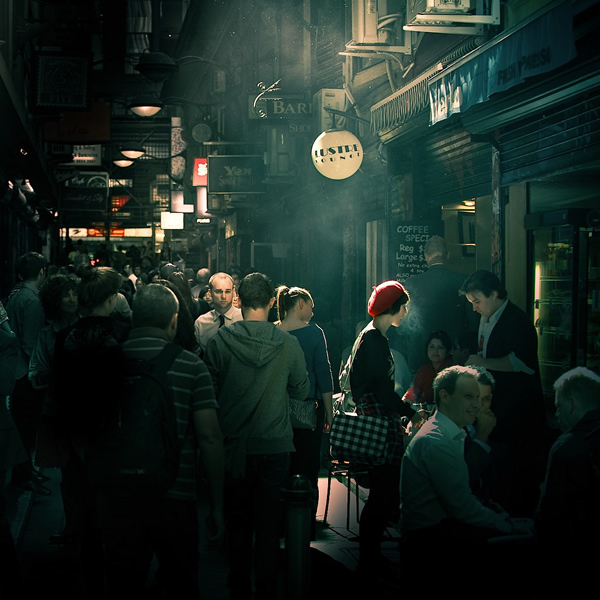The Best Strategy To Use For Street Photographers
The Best Strategy To Use For Street Photographers
Blog Article
Excitement About Street Photographers
Table of ContentsStreet Photographers - The FactsThe 9-Second Trick For Street PhotographersEverything about Street PhotographersAll about Street PhotographersAbout Street Photographers
A style of digital photography that records everyday life in a public place. The actual publicness of the setup allows the professional photographer to take candid pictures of unfamiliar people, usually without their knowledge. Street professional photographers do not always have a social purpose in mind, but they prefer to separate and record minutes which may or else go undetected (Street Photographers).Though he was affected by a lot of those that influenced the road professional photographers of the 1950s and '60s, he was not chiefly curious about capturing the spirit of the road. The impulse to aesthetically record people in public started with 19th-century painters such as Edgar Degas, douard Manet, and Henri de Toulouse-Lautrec, who worked side by side with professional photographers attempting to record the significance of city life.
While the professional photographers' subject was basically the very same, the outcomes were markedly different, showing the effect of the digital photographer's intent on the personality of the photos he generated.
Provided the fine top quality of his pictures and the breadth of product, designers and musicians often bought Atget's prints to use as reference for their own job, though commercial passions were rarely his major inspiration. Rather, he was driven to picture every last residue of the Paris he enjoyed.
The smart Trick of Street Photographers That Nobody is Talking About
They disclose the city with his eyes. His work and fundamental understanding of digital photography as an art form served as ideas to generations of digital photographers that adhered to. The next generation of road professional photographers, though they likely did not describe themselves because of this, was ushered in by the photojournalism of Hungarian-born digital photographer Andr Kertsz.
Unlike his peers, Brassa made use of a larger-format Voigtlnder cam with a longer direct exposure time, forcing him to be extra calculated and thoughtful in his technique than he may have been if making use of a Leica. (It is assumed that he might not have been able to manage a Leica during that time, but he did, nonetheless, use one in the late 1950s to take colour photos.) Brassa's photos of the Paris underworld lit up by artificial light were a revelation, and the compilation of the collection that he published, (1933 ), was a significant success.
Cartier-Bresson was a champ of the Leica cam and among the first digital photographers to maximize its capacities. The Leica allowed the professional photographer to connect with the surroundings and to catch minutes as they happened. Its fairly little dimension likewise helped the professional photographer fade into the background, which was Cartier-Bresson's recommended method.
The Greatest Guide To Street Photographers
It is as a result of this basic understanding of the art of picture taking that he is typically credited with uncovering the medium throughout again roughly a century since its invention. He you can try here took photographs for greater than a half century and influenced generations of photographers to trust their eye and instinct in the moment.
These are the inquiries I shall try to address: And after that I'll leave you with my very own interpretation of road photography. Yes, we do. Let's start with specifying what an interpretation is: According to (Street Photographers) it is: "The act of specifying, or of making something guaranteed, distinctive, or clear"
No, absolutely not. The term is both have a peek here limiting and deceiving. Seems like a road photography need to be pictures of a streets best?! And all street digital photographers, besides a handful of outright beginners, will totally appreciate that a street is not the key part to street digital photography, and really if it's a photo of a street with perhaps a couple of uninteresting people not doing anything of passion, that's not street digital photography that's a photo of a road.
The Single Strategy To Use For Street Photographers
He makes a valid point don't you think? Nevertheless, while I concur with him I'm uncertain "candid public photography" will certainly catch on (although I do kind of like the term "candid digital photography") since "street photography" has actually been around for a long time, with lots of masters' names connected to it, so I believe the term is right here to stay.
You can shoot at the coastline, at a festival, in a street, in a park, in a piazza, in a coffee shop, at a gallery or art gallery, in a metro station, at an occasion, on a bridge, under a bridge ...
Yes, I'm afraid we worried no choice! Your Domain Name Without rules we can not have a meaning, and without a meaning we do not have a style, and without a genre we do not have anything to specify what we do, and so we are stuck in a "policies meaning genre" loophole!
Street Photographers Things To Know Before You Get This

Report this page